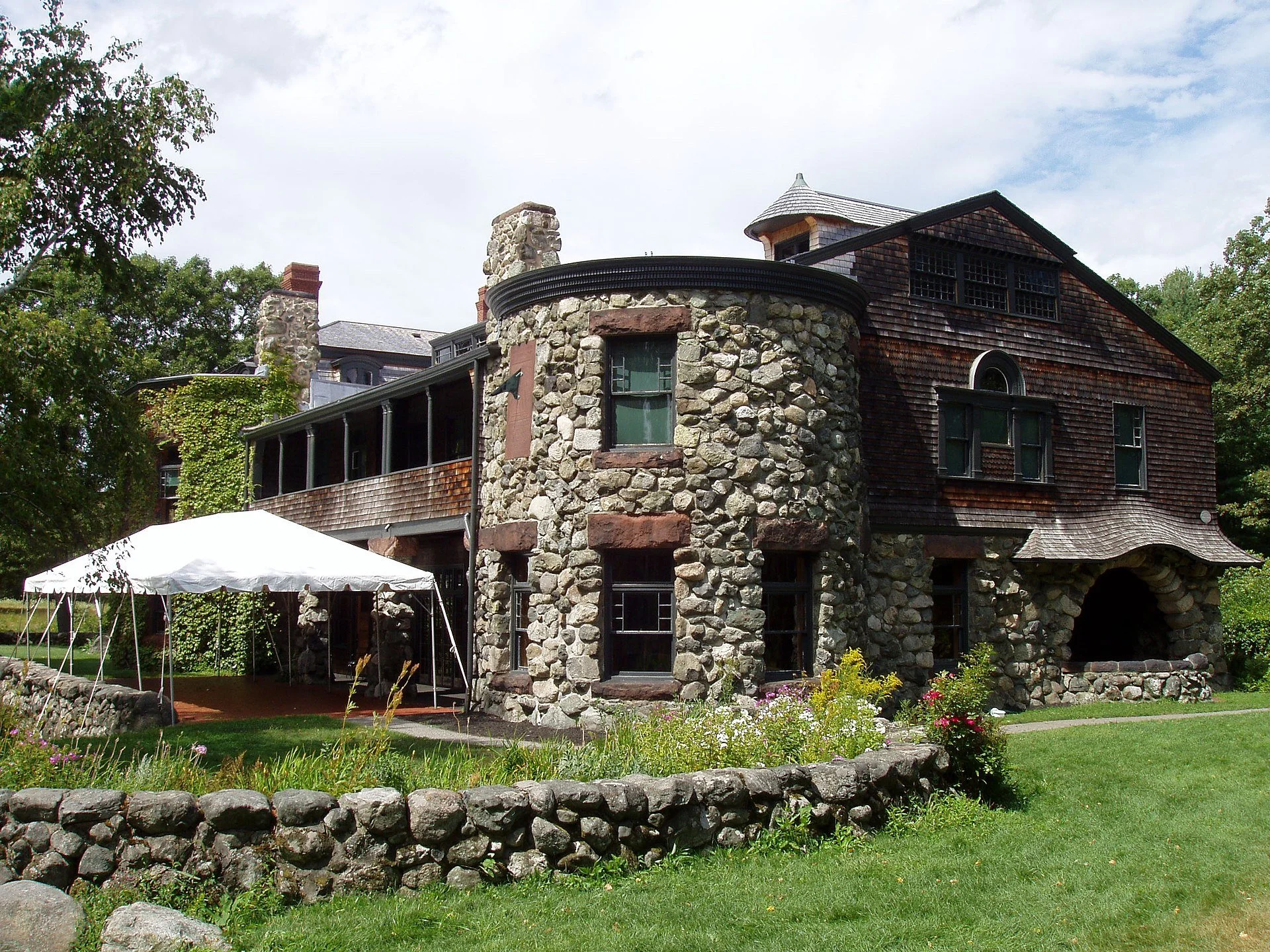
Melding buildings and landscape
Henry Hobson Richardson’s famous Trinity Church (built 1872-1877) on Boston’s Copley Square.
Adapted from Robert Whitcomb’s “Digital Diary,’’ in GoLocal24.com
Many people have seen the great Gilded Age architect Henry Hobson Richardson’s (1838-1886) famous public and private buildings around America, with Boston’s grand Trinity Church still the most famous. Richardson invented a unique Romanesque Revival style with ingenious massing and use of stone, and he was also a pioneer in developing the remarkably modernist “Shingle Style” houses so popular in New England.
And yet while Richardson was very well known in his fairly short lifetime, few people now know his name, even though many historians consider him a founder of modern American architecture.
But Hugh Howard has come along to help rectify that with his duel biography Architects of an American Landscape: Henry Hobson Richardson, Frederick Law Olmsted, and the Reimagining of America’s Public and Private Spaces.
Olmsted (1822-1903), unlike Richardson, remains famous, as the co-designer of Central Park and designer of many other famous parks, such as those in Boston’s “Emerald Necklace,’’ across America. Many see him as the father of American landscape architecture.
Richardson and Olmsted, despite very different backgrounds and personalities, worked very closely on dozens of commissions for cooperative designs for parks, railroad stations, public libraries and houses. Their projects integrated the built and natural environments. Many of these collaborations resulted in Richardson’s buildings looking comfortably settled into Olmsted’s landscaping.
Olmsted said of Richardson:
“He was the greatest comfort and the most potent stimulus that has ever come into my artistic life.”
This is a terrific book, elegantly written. It would have even better with bigger and clearer pictures.
In Waltham, Mass.: “Stonehurst,’’ now a museum and built for Boston Brahmin lawyer Robert Treat Paine. Richardson designed the house and Olmsted the grounds, in close collaboration, in a project that took from 1883-1886.
Consuming beauty while extracting resources
“Melas Chasms Sunrise,’’ by Isabel Beavers, in the show “Golden Spike,’’ at Brookline (Mass.) Arts Center, through Jan. 31.
This is a three-person exhibition about the environment and climate change. A "golden spike" is presented as a signifier of the extreme man-made change in recent geologic record. Artists Beavers, Allison Gray and William Van Beckum explore the concept of "anthropocence," or the landscape as evidence of humanity's mark in time through models and other representations of landscapes from across history. "We simultaneously consume aesthetic beauty from landscapes, while treating them as sites of extraction and destruction," the artists say.
Overlooking Leverett Pond in Olmsted Park in Brookline
Here’s an edited version of a Wikipedia list of historic buildings in Brookline (Massachusetts’s largest town) that are open to the public:
The birthplace of John F. Kennedy stands in Brookline and is listed in the National Register of Historic Places. It is maintained by the National Park Service and is open to the public from May through September.
"Fairsted", the 100-year-old business headquarters and design office for renowned landscape architect Frederick Law Olmsted and the Olmsted Brothers firm, has been carefully preserved as the Frederick Law Olmsted National Historic Site, on 7 acres of landscaped grounds at 99 Warren St.
John Goddard House, an historic house at 235 Goddard Ave., was built in 1767 and added to the National Register of Historic Places in 1985.
Larz Anderson Park is in Brookline on the 64-acre estate once owned by Larz Anderson and Isabel Weld Perkins. The park contains the Larz Anderson Auto Museum, the oldest automobile collection in the country, as well as Putterham School, a one-room schoolhouse from colonial times.
Finally, 'Open Space Master Plan' for fabled Newport
The U.S. Naval War College, in Newport.
The Newport Open Space Partnership is very close to making public its “Open Space Master Plan,” which the Newport Daily News says is the “first citywide open space planning effort since [legendary landscape architect} Frederick Law Olmsted Jr. published “Proposed Improvements for Newport,’’ in 1913. ‘’ Amazing that with all the changes in the City by the Sea in the past century that it has taken this long!
“It’s a high-quality planning document,” Scott Wheeler, the city’s arborist and supervisor of buildings, ground and parks, told the paper. “It will be invaluable as a helpful guide to much of what we do. It has already helped us.” Good news for one of the most interesting, colorful and complicated cities in America and one that despite its small size, is well known around the world. Mr,. Olmsted, famed designer of New York's Central Park, would have been pleased.




